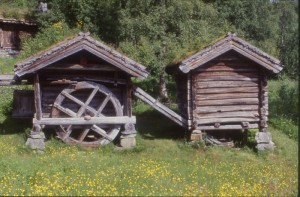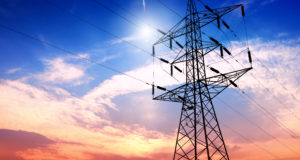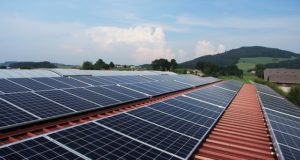 There has been one constant in all of recorded human history: our dependence on water. We need it to live, but not only to drink. Water can be harnessed in a multitude of ways to supply us with power, warmth, food, and even enhance our shelter.
There has been one constant in all of recorded human history: our dependence on water. We need it to live, but not only to drink. Water can be harnessed in a multitude of ways to supply us with power, warmth, food, and even enhance our shelter.
Over the years, water power generation has improved tremendously. We have reached a point where we no longer need massive power plants just to power a few houses. Any home located on or near water can make use of the most abundant resource on our planet to provide its energy requirements and more.
Location is obviously an important factor in whether or not water power is appropriate for your purposes. Ask yourself if there is a strong steam or river nearby, or if you will have need of extensive amounts of water for irrigation. As with most types of alternative energy, your needs combined with what is both practical and available determine the most suitable course of action for you.
After determining the seasonal availability and depth of your water source, you next need to determine the power requirements for your home or farm. Your energy requirements will be very different if you’re providing power to an entire farm or homestead as opposed to a small residential house. Also make sure that you can run the appropriate wiring between the turbine’s intended location and your home without placing the wires in an area where they may be dug up or unintentionally cut.
Micro-Hydro Water Turbine Generators are a fantastic investment for those with riverside homes. Depending on your energy consumption and the water flow, it could take as few as three of these small but powerful generators to provide electricity for your entire home. It is important, however, that you determine whether the river is deep enough and fast enough so that it does not freeze solid during the winter. This type of generator can be purchased online, and it can be installed easily by almost anyone. They can also be very cost effective, with prices ranging from $1,200 for a basic model to $50,000 for systems designed to power entire homesteads without interfering with the flow of the river or the fish life therein.
Once you know the amount of electricity needed, you can determine how to best use your resources. The ability to process what you grow can be incredibly advantageous to a self-sustaining environment, and water offers a number of other potential benefits for your homestead.
When looking at the ability to grow crops, either for food or for biofuels like ethanol, water delivery becomes a major concern, even for the best located farms. While labor intensive, the simplest method to ensure enough water for your crops is to dig shallow irrigation trenches throughout the fields.
While this much physical labor might be daunting, the benefits can be equally massive. By digging slightly deeper than standard trenches, you can increase the speed, and thus the power, of the water flowing in. Building an old-fashioned, grist mill-style paddle wheel at the entrance to each trench can boost power production for your home during the electrically demanding summer months, run gears for grinders, or operate other types of processing equipment or power tools.
While not everyone has access to the funds to purchase a brand-new water turbine, a paddle wheel can be built out of any spare wood or metal you might have on hand—or look for them at salvage shops. A high skill level isn’t needed but a few tools are required, as is a method of converting the spinning of the wheel into energy. Spare car, motorcycle, or lawnmower parts can help with that task.
Water that isn’t used to care for crops or to generate electricity can be gathered for use in heating your home via a simple boiler system and radiators. By running hot water pipes throughout the flooring of your home, you can warm the floors and reduce the need to heat the ambient air. You’ll need a sturdy water heater and energy to operate it. The power can come from your water turbine, or you can install a wood-fired stove to heat the water.
Along with heating your home, the radiator system can be used to cool it during the summer. Simply make sure the heat source for the boiler is shut off, and let cool water circulate through the pipes. This mimics a geothermal system, but without the thousands of dollars required for purchase and installation.
_____________________________________________________
_____________________________________________________
 Off The Grid News Better Ideas For Off The Grid Living
Off The Grid News Better Ideas For Off The Grid Living




